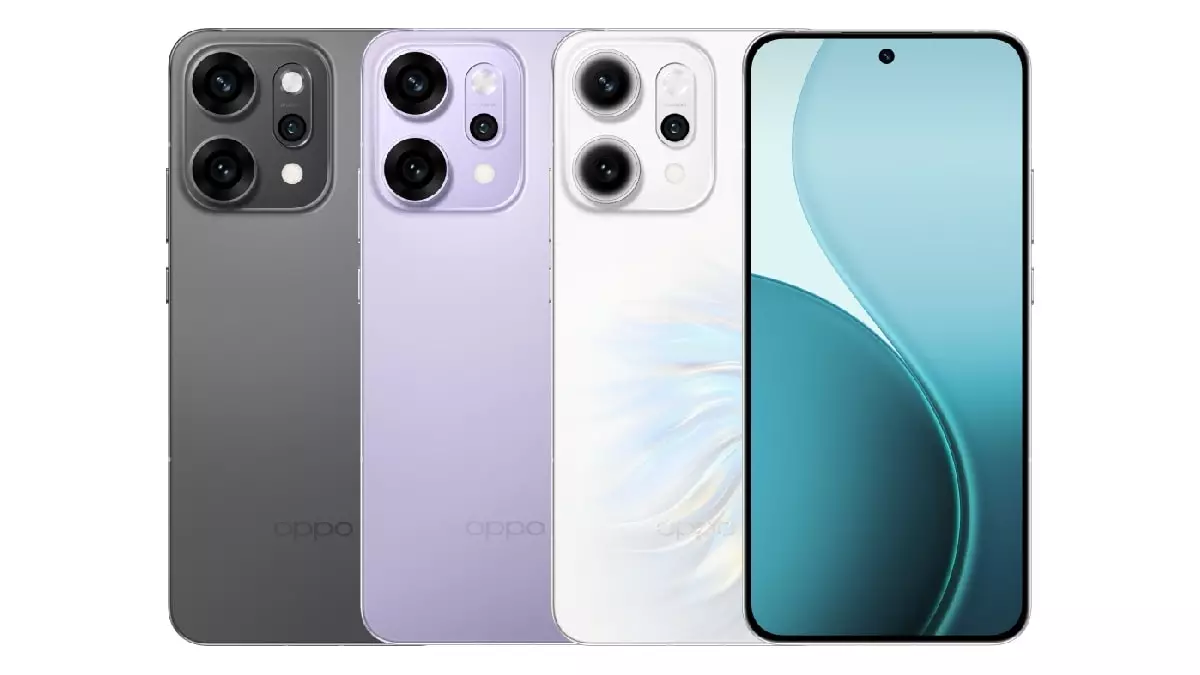The upcoming Oppo Reno 14 5G series shines a spotlight on a familiar tale: shiny new features, glossy presentations, but ultimately a product that appears to coast on its predecessor’s laurels. Under the guise of “innovative AI features” and premium-looking hardware, Oppo’s latest launches reveal a pattern that has become all too common — incremental upgrades that leave consumers questioning whether they are truly investing in the future or merely paying for marketing hype. The company’s teaser campaign, which emphasizes AI-powered capabilities and cutting-edge specifications, seems more like a calculated marketing ploy than a genuine leap forward. When every new flagship feels like a slightly revamped version of what’s come before, the narrative of disruption is hard to buy.
It’s crucial to recognize that technology companies often thrive on this cycle of incremental overhauls. They dangle the promise of revolutionary features—like AI Recompose, AI Style Transfer, and high-megapixel cameras—as if these were game-changers. Yet, the reality is these features, while impressive on paper, tend to be small enhancements that serve more as marketing tools than meaningful technological breakthroughs. The consumer’s perception of progress is thus manipulated, encouraging impulse buying rather than thoughtful investment.
The Bigger Question: Are These Devices Truly Worth the Price?
When analyzing the Oppo Reno 14 series, it’s impossible to ignore the stark reality of pricing and their actual value. The Chinese price points hint at a premium experience—starting at approximately Rs. 33,200 for the base model—yet the features delivered do little to justify a jump in cost beyond mere brand prestige. With competitors offering flagship-level specs at comparable or even lower prices, Oppo’s strategy seems to lean more on brand loyalty than genuine differentiation.
The large, vibrant displays with 120Hz refresh rates, the use of MediaTek Dimensity processors, and high RAM capacities are promising, but they’re also expected at this tier. The question remains—are consumers truly benefiting from this, or are they simply caught in a cycle of upgrading every time a new “premium” phone is released? The 50-megapixel camera sensors, with their AI enhancements, may offer better photos, but how much of that is actual innovation and how much is software smokescreen? When technology is increasingly commoditized, the real discussion should gravitate toward value, durability, and longevity, which are areas where many brands—including Oppo—often fall short.
The Reality Check: Is Oppo Falling Into the Same Trap?
In the broader context of smartphone innovation, Oppo’s latest offerings appear to be part of a recurring pattern exhibited by many mid-tier brands: a relentless race to add more megapixels, bigger batteries, and flashier features that may or may not resonate with everyday users. While these specs may look impressive on paper, the user experience is often marred by bloatware, unoptimized software, and a tendency toward short-lived novelty.
Oppo’s ColorOS and Android 15 might promise a smoother experience, but in practice, these overlays sometimes hinder genuine user-friendliness. The company’s focus on AI-driven features might seem like a step toward smarter devices, but in reality, this often translates to intrusive data collection and the commodification of user data masked behind buzzwords. Furthermore, the physical design—while striking—does little to overcome the fundamental issue of obsolescence. The phone’s high refresh rate screens and advanced camera sensors might impress at launch, but they tend to lose their luster as newer models enter the market just months later.
The battery specifications, ranging from 6,000mAh to 6,200mAh, are notable, but they are not revolutionary. Fast charging, wireless or wired, remains a standard expectation rather than a differentiator. These tech specs may seem attractive initially, but they are ultimately just features that contribute to a cycle of perpetual upgrading, not genuine improvements in user experience or technology.
Branding, Hype, and Consumer Disillusionment
Oppo’s marketing has mastered the art of hype, painting the Reno 14 series as a pivotal leap forward. Yet, behind the sleek marketing lay hopes of meaningful technological evolution, which are inevitably dashed by the reality of market forces dictating half-measures and cautious incrementalism. Consumers, often caught in the illusion of technological progress, are asked to shell out substantial sums for phones that offer little more than slightly refined camera algorithms or marginal UI improvements.
This cycle fosters a sense of dissatisfaction among consumers, who may find themselves trapped in perpetual upgrade mode, chasing the latest buzzword-laden device, rather than investing in high-quality products built for long-term use. The gap between the promise of innovation and the reality of what’s delivered continues to widen—not necessarily because companies don’t want to innovate, but because they are increasingly driven by profit margins over genuine technological leaps.
The embarrassment of seeing a flagship device that looks and feels familiar year after year is an indictment of an industry obsessed with surface-level enhancements. Oppo’s Reno 14 series exemplifies this trend—promising future-ready features while delivering only marginal improvements that barely justify its premium price—fueling consumer skepticism in a market that desperately needs honest innovation.

